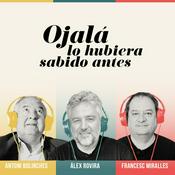Episodios disponibles
5 de 156
- 151: Caring Close to Home: How Point-of-Care EEG and Community Innovation Are Changing ICU CareRural nursing is anything but simple. They have limited resources, fewer specialists, and often have to send patients hours away from their families for a higher level of care. But all that is changing as new tech like Zeto brings monitoring right to the bedside and keeps more patients close to home.In this episode, ICU nurse leader Kristen RN shares how point-of-care EEG has empowered her team to catch subclinical seizures sooner and make faster, more informed clinical decisions. From buy-in to implementation, you'll hear how she advocated for her community and successfully integrated this technology into a small ICU. If you work in a rural or resource-limited facility, don't miss this one!Topics discussed in this episode:The unique challenges rural nurses and hospitals faceWhy keeping patients close to home mattersHow telemedicine and new tech are transforming rural healthcareWhy subclinical seizures are hard to recognizeHow Zeto’s spot EEG helps nurses keep more patients close to homeThe positive impact on team confidence and patient careHow you can advocate for the tools your community needsLearn more about Zeto here:https://zeto-inc.com/Mentioned in this episode:CONNECT 📸 Connect on Instagram: https://www.instagram.com/therapidresponsern/ 📚 Check out my course: https://www.rapidresponseandrescue.com/learnmore 🧑💻Check out my website: https://www.rapidresponseandrescue.com/ 📬 Subscribe to my newsletter: https://www.rapidresponseandrescue.com/login 🎁 Affiliation and discounts: https://www.rapidresponseandrescue.com/therapidresponsern ✅ Earn CE’s for listening to podcasts through RNegade: https://rnegade.thinkific.com/?ref=d9d541 SAY THANKS 💜Leave a review on Apple Podcasts: https://podcasts.apple.com/ca/podcast/rapid-response-rn/id1535997752 💚Leave a rating on Spotify: https://open.spotify.com/show/55LQqeDg6XFeixvZLEp4xE ⏱️ To get the FREE Rapid Response RN Assessment Guide and the coupon code for $10 off the cost of the course, message Sarah on Instagram @TheRapidResponseRN and type the word PODCAST! This episode was produced by Podcast Boutique https://www.podcastboutique.com--------30:20
- 150: Sepsis-Induced Cardiomyopathy with Dr. Mahmoud Ibrahim MDYour pneumonia patient is hypotensive, tachycardic, and not responding to fluids… what did you miss? It could be sepsis-induced cardiomyopathy, a common under-recognized shock state you could see at the bedside.In this episode, Dr. Mahmoud Ibrahim MD and host Sarah Lorenzini use a case study to highlight how nurses, intensivists and the ICU team can work together to recognize the signs of sepsis-induced cardiomyopathy early and give patients a better chance at recovery. You'll learn the diagnostic clues that your patient’s heart is in trouble, how to approach controversial treatments like sodium bicarb, and what has to happen before intubation in a dual shock state.Topics discussed in this episode:What the initial bedside assessment says about the patientTreatment priorities for the intensivist and nurseSigns that point to more than just sepsisWhy fluids aren’t always the answerBlood pressure management: vasopressors and inotropesPathophysiology of sepsis-induced cardiomyopathyHow a sepsis-induced cardiomyopathy diagnosis changes treatmentThe vasopressin debate for sepsis-induced cardiomyopathyClues your intervention isn’t working and what to do nextHow to prepare the patient for high-risk intubationWhat you need to know about administering sodium bicarbWhy collaboration matters at every step for patient recoveryConnect with Dr. Ibrahim:Instagram: https://www.instagram.com/icuboy_meded/Facebook: https://www.facebook.com/share/1Dg1ZTyfsN/TikTok: https://www.tiktok.com/@icuboy_mededThreads: https://www.threads.com/@icuboy_mededX: https://x.com/icuboy_mededLearn more about the different phenotypes in sepsis induced cardiomyopathy:https://journal.chestnet.org/article/S0012-3692(25)05143-8/abstractMentioned in this episode:CONNECT 📸 Connect on Instagram: https://www.instagram.com/therapidresponsern/ 📚 Check out my course: https://www.rapidresponseandrescue.com/learnmore 🧑💻Check out my website: https://www.rapidresponseandrescue.com/ 📬 Subscribe to my newsletter: https://www.rapidresponseandrescue.com/login 🎁 Affiliation and discounts: https://www.rapidresponseandrescue.com/therapidresponsern ✅ Earn CE’s for listening to podcasts through RNegade: https://rnegade.thinkific.com/?ref=d9d541 SAY THANKS 💜Leave a review on Apple Podcasts: https://podcasts.apple.com/ca/podcast/rapid-response-rn/id1535997752 💚Leave a rating on Spotify: https://open.spotify.com/show/55LQqeDg6XFeixvZLEp4xE ⏱️ To get the FREE Rapid Response RN Assessment Guide and the coupon code for $10 off the cost of the course, message Sarah on Instagram @TheRapidResponseRN and type the word PODCAST! This episode was produced by Podcast Boutique https://www.podcastboutique.com Xshears are the best shearscheck em out here: https://xshear.com//discount/Rapid10 and you can use code RAPID10 to get 10% off your purchase--------48:04
- 149: Inside the New 2025 AHA Resuscitation Guidelines: What’s New, What’s Controversial, and Why It Matters with Dr. Ashish Panchal, MDEvery five years, resuscitation guidelines get a refresh. This year, a few have changed, many have stayed the same, and some are creating major controversy.In this episode, Dr. Ashish Panchal, Chair of the AHA Emergency Cardiovascular Care Committee, helps us unpack what’s new, what might surprise you, and the science behind each decision. You'll learn why there’s serious debate around epinephrine dosing, what changes matter most for the bedside, and how these updates will change the way you and your team respond to the next code!Topics discussed in this episode:The history and development of the AHA Resuscitation GuidelinesKey improvements: algorithms, clear language, and unified careBig, fundamental changes in the guidelinesHow choking management guidelines have changedThe recommended approach for synchronized cardioversionNew guidelines for post-resuscitation careWhy there’s controversy around mechanical CPR and DSDIV vs. IO access: best practice and key takeawaysThe controversy around epinephrine dosingWhat these changes mean for nurses and code teamsListen to E140 with Dr. Ashish Panchal:https://healthpodcastnetwork.com/episodes/rapid-response-rn/140-resuscitation-then-and-now-how-evidence-shapes-every-beat-with-guest-dr-ashish-panchal-md-phd/Mentioned in this episode:AND If you are planning to sit for your CCRN and would like to take the Critical Care Academy CCRN prep course you can visit https://www.ccrnacademy.com and use coupon code RAPID10 to get 10% off the cost of the course!CONNECT 📸 Connect on Instagram: https://www.instagram.com/therapidresponsern/ 📚 Check out my course: https://www.rapidresponseandrescue.com/learnmore 🧑💻Check out my website: https://www.rapidresponseandrescue.com/ 📬 Subscribe to my newsletter: https://www.rapidresponseandrescue.com/login 🎁 Affiliation and discounts: https://www.rapidresponseandrescue.com/therapidresponsern ✅ Earn CE’s for listening to podcasts through RNegade: https://rnegade.thinkific.com/?ref=d9d541 SAY THANKS 💜Leave a review on Apple Podcasts: https://podcasts.apple.com/ca/podcast/rapid-response-rn/id1535997752 💚Leave a rating on Spotify: https://open.spotify.com/show/55LQqeDg6XFeixvZLEp4xE ⏱️ To get the FREE Rapid Response RN Assessment Guide and the coupon code for $10 off the cost of the course, message Sarah on Instagram @TheRapidResponseRN and type the word PODCAST! This episode was produced by Podcast Boutique https://www.podcastboutique.com--------55:54
- 148: Differentiating Pulmonary Hypertension vs Dilated Cardiomyopathy with Natalie RNDifferential diagnosis is part physiology, part detective work. Especially in heart failure, where similar vital signs can mean very different things.In this episode, Natalie RN is back on the show to break down two pediatric cases that looked almost identical on arrival to the ED but their workups led to two very different treatment plans. She shares the assessment findings, diagnostics, and clinical clues that helped them uncover what was really going on.Learn how to connect the dots and find the right intervention when presentations look identical!Topics discussed in this episode:Presentation of two pediatric patients with similar symptomsDifferential diagnosis and early clinical cluesWhat to look for in your clinical assessmentPathophysiology of pulmonary hypertensionPathophysiology of dilated cardiomyopathyKey physical exam and diagnostic differencesDilated cardiomyopathy interventionsWhy it’s hard to diagnose pulmonary hypertension in the ERNurse priorities when managing patients in the CVICUManaging pulmonary hypertension crises and reducing PVRPearls and pitfalls of treating these conditionsConnect with Natalie:https://www.instagram.com/chatwithnat_rn/Listen to Chat with Nurse Nat on Spotify:https://open.spotify.com/show/7Jh2qe44KipudVKkdXFwWHListen to Chat with Nurse Nat on Apple Podcasts:https://podcasts.apple.com/us/podcast/chat-with-nurse-nat/id1815541418Mentioned in this episode:CONNECT 📸 Connect on Instagram: https://www.instagram.com/therapidresponsern/ 📚 Check out my course: https://www.rapidresponseandrescue.com/learnmore 🧑💻Check out my website: https://www.rapidresponseandrescue.com/ 📬 Subscribe to my newsletter: https://www.rapidresponseandrescue.com/login 🎁 Affiliation and discounts: https://www.rapidresponseandrescue.com/therapidresponsern ✅ Earn CE’s for listening to podcasts through RNegade: https://rnegade.thinkific.com/?ref=d9d541 SAY THANKS 💜Leave a review on Apple Podcasts: https://podcasts.apple.com/ca/podcast/rapid-response-rn/id1535997752 💚Leave a rating on Spotify: https://open.spotify.com/show/55LQqeDg6XFeixvZLEp4xE ⏱️ To get the FREE Rapid Response RN Assessment Guide and the coupon code for $10 off the cost of the course, message Sarah on Instagram @TheRapidResponseRN and type the word PODCAST! This episode was produced by Podcast Boutique https://www.podcastboutique.com AND If you are planning to sit for your CCRN and would like to take the Critical Care Academy CCRN prep course you can visit https://www.ccrnacademy.com and use coupon code RAPID10 to get 10% off the cost of the course!--------35:25
- 147: Recognize, Decompress, Stabilize: Managing a Pneumothorax with Trauma PeteEvery trauma nurse knows this feeling: your stable patient suddenly starts to decompensate and instinct tells you there’s more to the story. Today’s case starts with a stable, post-arrest patient and ends in a full-blown tension pneumothorax.Hear why this patient went from stable to crashing in minutes, how delayed recognition changed the course of care, what diagnostics and assessments could have caught earlier. Trauma Pete breaks down the tell-tale signs, how it differs from a simple pneumothorax, and why it's so easy to miss in trauma patients.In this episode, you’ll learn which patients are the most at risk, how to spot tension pneumothorax early, and why having a systematic approach to decompression make all the difference!Topics discussed in this episode:Presentation of a stable, post-arrest patientThe patient's rapid decline and first interventionsWhy they misread the signs of tension pneumothoraxPneumothorax in intubated vs. non-intubated patientsThe physiology of tension simple vs. tension pneumothoraxBedside clues and diagnostic signs of tension pneumothoraxEarly intervention and treatment prioritiesEmergent needle decompression: timing, technique, and follow-upChest tube placement and management: tips, troubleshooting, and air leaksMentioned in this episode:CONNECT 📸 Connect on Instagram: https://www.instagram.com/therapidresponsern/ 📚 Check out my course: https://www.rapidresponseandrescue.com/learnmore 🧑💻Check out my website: https://www.rapidresponseandrescue.com/ 📬 Subscribe to my newsletter: https://www.rapidresponseandrescue.com/login 🎁 Affiliation and discounts: https://www.rapidresponseandrescue.com/therapidresponsern ✅ Earn CE’s for listening to podcasts through RNegade: https://rnegade.thinkific.com/?ref=d9d541 SAY THANKS 💜Leave a review on Apple Podcasts: https://podcasts.apple.com/ca/podcast/rapid-response-rn/id1535997752 💚Leave a rating on Spotify: https://open.spotify.com/show/55LQqeDg6XFeixvZLEp4xE ⏱️ To get the FREE Rapid Response RN Assessment Guide and the coupon code for $10 off the cost of the course, message Sarah on Instagram @TheRapidResponseRN and type the word PODCAST! This episode was produced by Podcast Boutique https://www.podcastboutique.com Listen to the In The Heart of Care Podcasthttps://link.cohostpodcasting.com/6598429e-e927-45b0-9b57-7dd34a09d803?d=seASyqjs7--------56:16
Más podcasts de Educación
Podcasts a la moda de Educación
Acerca de Rapid Response RN
Do you want to go from dreading emergencies to feeling confident and ready to jump into action to rescue your patient?
Well, this show will let you see emergencies unfold through the eyes of a Rapid Response Nurse. With real life stories from the frontlines of nursing, host Sarah Lorenzini MSN, RN, CCRN, CEN, a Rapid Response Nurse and educator, shares her experiences at rapid response events and breaks down the pathophysiology, pharmacology, and the important role the nurse plays during emergencies.
If you want to sharpen your assessment skills and learn how to think like a Rapid Response Nurse, then Sarah is here to share stories, tips, tricks, and mindsets that will prepare you to approach any emergency.
Every episode is packed full of exactly what you need to know to handle whatever crisis that could arise on your shift. It’s one thing to get the right answer on the test, but knowing how to detect when YOUR patient is declining and what to do when YOUR patient is crashing is what will make or break your day… and might just save your patient’s life.
Sitio web del podcastEscucha Rapid Response RN, Learning English Conversations y muchos más podcasts de todo el mundo con la aplicación de radio.net

Descarga la app gratuita: radio.net
- Añadir radios y podcasts a favoritos
- Transmisión por Wi-Fi y Bluetooth
- Carplay & Android Auto compatible
- Muchas otras funciones de la app
Descarga la app gratuita: radio.net
- Añadir radios y podcasts a favoritos
- Transmisión por Wi-Fi y Bluetooth
- Carplay & Android Auto compatible
- Muchas otras funciones de la app


Rapid Response RN
Escanea el código,
Descarga la app,
Escucha.
Descarga la app,
Escucha.




































